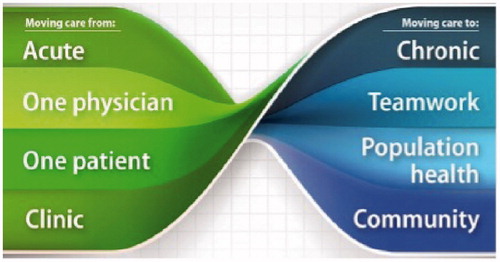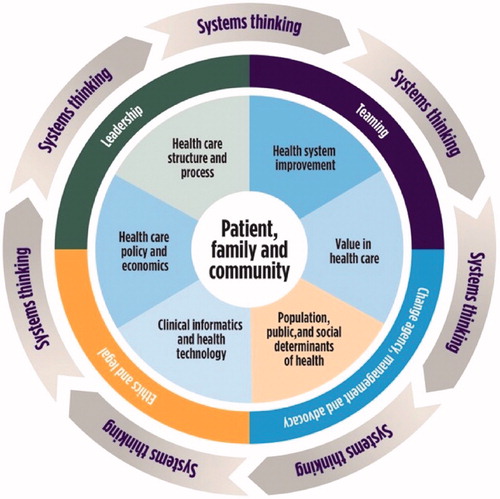Figures & data
Figure 1. Transition of health care in the United States. The figure depicts four components of health care in the United States, with the corresponding transition from past or current state toward a future state. These components highlight the burning platform for change in the learning areas in medical education. Copyright American Medical Association. Used with permission.

Figure 2. Health systems science curriculum framework. The figure depicts the 12 domains within the health systems science framework developed by the American Medical Association Accelerating Change in Education initiative. At the center are the patient, family, and community, since optimizing individual and population outcomes is the driving motivation. The seven domains around the center are core foundational learning areas. The four domains in the middle circular rim (e.g., leadership and teaming) are the cross-cutting domains, which intersect with all other learning areas. The systems thinking domain surrounds and encompasses the whole framework, demonstrating the importance of a systems-based framework which integrates all parts of the model. The individual domains and their integration are critical to the new curriculum and new professionalism model which emphasizes a comprehensive, systems, and team-based approach. Copyright American Medical Association. Used with permission.

Table 1. American Medical Association’s Accelerating Change in Education Consortium collective scholarly outputs in health systems science (HSS) (2014–2020).
Table 2. Representative health systems science curriculum examples from U.S. medical schools.
Table 3. Key challenges to health systems science education and potential strategies to facilitate change.
